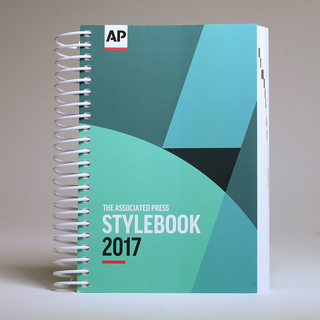 •
•
Marketing is about clear communication and consequent engagement. Bad grammar, embarrassing misspellings and careless typos all erode credibility and even damage brand reputation.
Unfortunately, another enemy of effective communication often goes overlooked: inconsistency. Just as a brand needs consistency in terms of messaging, look and feel, written words – the “voice” of an organization – need to be presented in a uniform manner.
In many cases, the organization may have certain ways web and published copy is written. And a lot of the time, only the primary communicators know those styles. It’s something they keep in their heads.
Just like the copy itself, these style guidelines need to be written down.
Not only does it keep the entire staff in the know, it also helps to have a reference readily available to the main authors within the organization.
There’s no need for anything fancy: A simple Word doc should do. But, it does need to be carefully followed to ensure your voice consistently comes through no matter who has the proverbial microphone.

So, where to start?
First, familiarize yourself with the AP Stylebook, which is essentially the media industry’s bible. Organized by words and topics A-Z, it’s the spiral-bound standby for a surprisingly wide number of inquiries.
Because it is so widely accepted – most prominently by newspapers and sites – it’s a good foundation for consistency.
From there, you can dig into those quirks and preferences for your organization.
Start with Your Own Name
When crafting style guides for clients, we often start here. How will you refer to yourself on first reference? Is it a Co., Inc., or LLC? Do you tend to keep that off? And what about subsequent references? Will you always spell it out or just use the one word after the first reference? Any kind of inconsistency will disrupt your reader, so decide how you want to do it and get it on paper.
Trademarks
If your products or services are trademarked, create a rule for when those little ™s and ®s will be used. Will you use it in every reference? Only the first? What about headlines? As with all these self-determined rules, there’s no right or wrong way. It’s just important to pick a direction and stick with it.
Industry Terms
Do you spell out acronyms on first reference or are they widely known by your audience? Are there certain terms that are universally or nearly always capped? Identify what those words are and get them down.
Commas
Yes, commas. There’s the Oxford camp and everyone else. Choose a side.

Format
The most common is time/date/place. Or is it place/date/time? This is one of those style gray areas where there is no established format, but you should have one. Same goes for headlines or titles: some capitalize every word, some ignore articles and/or prepositions, some lowercase two-letter words. There’s no official rule, so go with what you’re comfortable with.
Caps
Often times this will relate to job titles. Is Chief Officer always capitalized, or only before a name? If there’s no name at all, is it still capped? Do you always capitalize a certain service or department from within your organization?
Tags
This is an important place to be consistent in terms of SEO and the style guide is a great place to put them so they are always at the ready for blogs and YouTube videos. Get together a list of the keywords relevant to your business or product and create an entry in the guide. Tip: If you put these in sentence form using one long list with commas, you can cut and paste right into the post or video description!
These are just a few of many considerations to get the consistency wheels turning. Style guides are living documents that can be added to as issues arise (or before they do). Does your organization have a style guide? Any basic entries I missed? Oxford comma or no? Weigh in with a comment below!
 About The Author
About The Author
A journalist by trade, Shane tells stories that connect brands with target audiences and inspire them to act. He’s a writer, not a copy machine, and that approach brings exceptional content to every print or digital piece he pens.
Shane taps into his past as a reporter and editor to develop clear messages that resonate in every medium, be it blog or brochure, sponsored content or script.
Daily newspapers developed a habit for idea generation, attention to detail and knack for question-asking. His background as a magazine and web editor keeps client communications grammatically sound and effective.
Shane’s word-based deliverables range from long-form features to concise digital copy to persuasive prose. He’s been on both sides of the PR pitch and puts some muscle behind ABC’s media relations.